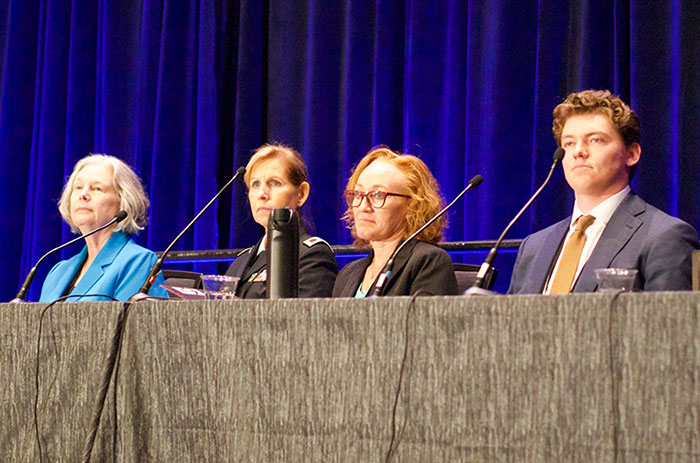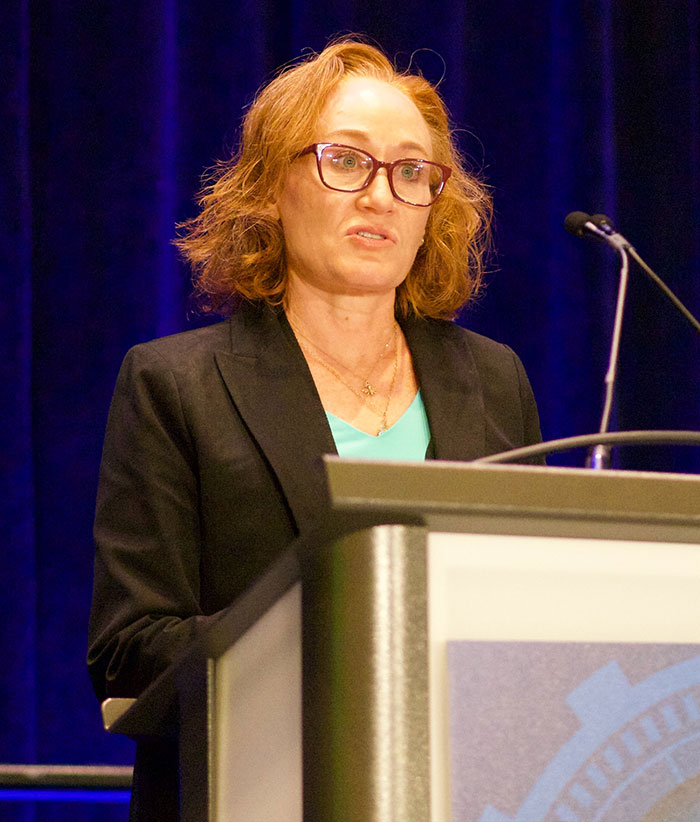Field Experimentation is Crucial for Dependable Medical Devices, Researchers Say

KISSIMMEE, Fla. — When researchers at the U.S. Army Medical Research and Development Command's Telemedicine and Advanced Technology Research Center wanted to test the capabilities of their new Remote Patient Management System in real-world conditions, they worked with MRDC's Experimentation Integration Cell to arrange participation in Project Convergence Capstone 4, a major joint multinational experimentation exercise organized by the Army Futures Command that took place in California earlier this year.
The EI Cell, which operates under MRDC's Office of the Principal Assistant for Acquisition, serves as the command's central coordinator for participation in experimentation events like PCC4, providing MRDC's direct reporting units with opportunities to conduct real-time testing of new medical technologies for use by Warfighters. With the EI Cell's assistance, the TATRC team was able to put the RPMS into the hands of experienced combat medics who tested the device in a variety of realistic field settings to validate the design and its performance, and to assess how well it provided patient care and remote telemedicine assistance in simulated casualty evacuation and intensive care hospital scenarios.
Zachary Buono, a senior biomedical and aeronautical engineer at TATRC who participated in the PCC 4 tests, emphasized the benefits of conducting real-world experimentation early in a device's development process as a way to optimize research and development efforts and to streamline its design to ensure that it effectively meets the operational needs of Warfighters.
"We spent about a month out there with this device getting firsthand accounts and user feedback from real soldiers, real medics and real clinicians in a field environment, and that is something that we really can't recreate in a lab setting," said Buono. "I'm not a Soldier, so seeing what really works and what doesn't, and how can we can improve it before we push it forward to a later stage of development, is crucial."

With the information obtained from the field testing during PCC 4, Buono and his team have been able to return to the laboratory with the data gathered, supplemented with feedback gathered from the users who tested the devices, to fine-tune the device and its user interface, upgrade the communications protocols for improved redundancy and reliability, and explore ways to streamline its integration into the overall medical care system through improved integration with digital patient data technologies and finding ways to improve autonomy and decision support in cases where the communications network is slow or lost altogether.
Buono discussed the TATRC team's experience during a panel session at the 2024 Medical Health System Research Symposium, an annual four-day conference in Kissimmee, Florida. MHSRS is the DOD's premier medical science research and development meeting. Over 4,000 people representing the military, academia, private industry and international partners attended the event to learn about the latest advances and initiatives in health care research related to combat casualty care, military operational medicine, clinical rehabilitation, information science, infectious diseases and radiation health effects. Many military and civilian representatives from across MRDC participated in the symposium as panelists and presenters.
As part of the panel session, titled "Experimentation – Beyond the Bench," Eva Rosvold, an acquisition workforce manager with the EI Cell, explained that the purpose of experimentation integration like the kind that TATRC conducted at PCC 4 is to ensure that the right medical capabilities and technologies are employed at the right experimentation event at the right time in the acquisition process. She explained that experimentation events offer unique opportunities for product developers to gain a deeper understanding of the needs and challenges of users through direct – and often immediate – feedback. Experimentation scenarios like PCC 4 offer opportunities to integrate a device with a broad array of other technologies in ways that might not be possible in a laboratory setting, and also provide opportunities for networking and collaboration on the fly. All these advantages ultimately inform concepts and requirements, which in turn lead not only to better medical technologies, but also to improved research, development and acquisition processes.
"We apply real-world learning to innovative ideas in order to inform concepts and requirements through experimentation," Rosvold explained. "Experimentation helps us tackle really big questions."

Rosvold noted that experimentation differs from operational test and evaluation. The latter is oriented toward ensuring that particular capabilities meet requirement established by the military and are ready for full scale production.
"In experimentation, you can fail and then bring that product back after making refinements or adjustments," said Rosvold. "Operational test and evaluation is not something that the product can fail in."
By providing medical device developers at MRDC with opportunities to identify a new technology's strengths and weaknesses, align material development with ever-evolving operational requirements and evaluate its readiness for integration into the broader military medicine network, field experimentation allows them to answer important questions about their technologies while they're still being designed and tested, so that users can have confidence that they will work reliably when they are fielded.
Rosvold explained that in addition to large-scale comprehensive experiments in realistic operational settings, such as PCC 4, the EI Cell also helps MRDC researchers test their prototype medical devices through other experimental means, such as discussion-based tabletop exercises, modeling and simulation, small scale limited-objective experiments and practical field experiments in controlled environments. The EI Cell's job is to match a particular technology with the right type of experimentation, and to identify when in the acquisition process that experimentation should take place. To date, the EI Cell has helped program managers, technology owners and principal investigators throughout MRDC complete over 20 experiments.
"If you have an opportunity to conduct real-world field experimentation, the soldiers are going to be some of your best friends," said Buono. "They will help you guide the next steps in your development of technologies and will affirm or debunk things that you thought were smart to build into the system."














